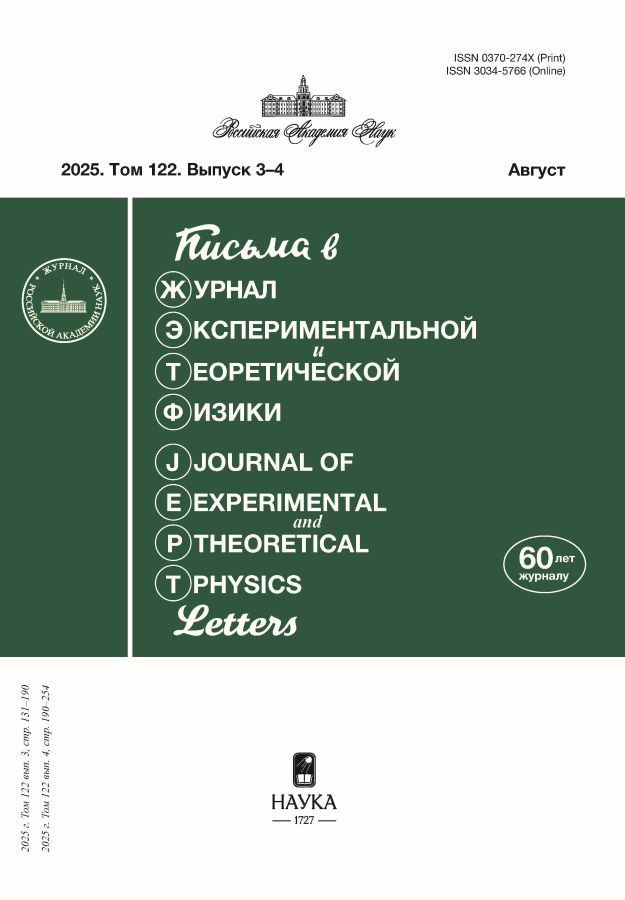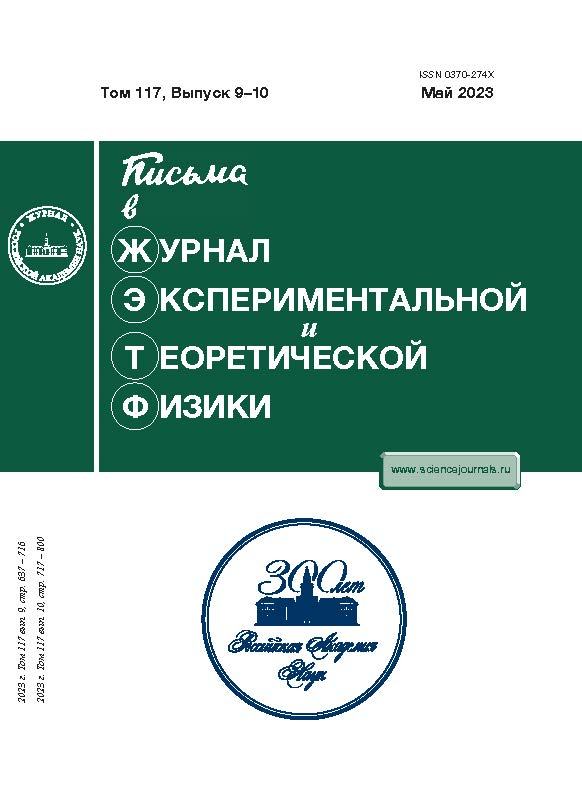Наклон и анизотропия дираковского спектра, вызванные перекрытием блоховских функций
- Авторы: Алисултанов З.З1,2, Демиров Н.А3
-
Учреждения:
- Московский физико-технический институт (МФТИ)
- Дагестанский федеральный исследовательский центр РАН
- Объединенный институт высоких температур РАН (ОИВТРАН)
- Выпуск: Том 117, № 9-10 (5) (2023)
- Страницы: 777-782
- Раздел: Статьи
- URL: https://rjonco.com/0370-274X/article/view/662561
- DOI: https://doi.org/10.31857/S1234567823100105
- EDN: https://elibrary.ru/CNSJBG
- ID: 662561
Цитировать
Полный текст
Аннотация
Показано, что в системах с дираковскими точками, возникающими при пересечении зон, принадлежащих эквивалентным представлениям группы симметрии возможно перекрытие этих зон. Такое перекрытие приводит к наклону и дополнительной анизотропии дираковского спектра, а также перенормировке скорости. В то же время, учет перекрытия не нарушает общих условий существования устойчивой точки пересечения зон. Эффективный дираковский гамильтониан при наличии перекрытия зон является псевдоэрмитовым и соответствует эффективному действию безмассового спинорного поля в искривленном пространстве-времени.
Об авторах
З. З Алисултанов
Московский физико-технический институт (МФТИ); Дагестанский федеральный исследовательский центр РАН
Email: zaur0102@gmail.com
Н. А Демиров
Объединенный институт высоких температур РАН (ОИВТРАН)
Автор, ответственный за переписку.
Email: zaur0102@gmail.com
Список литературы
- N. P. Armitage, E. J. Mele, and A. Vishwanath, Rev. Mod. Phys. 90, 015001 (2018).
- P. A. Dirac, Proceedings of the Royal Society of London A: Mathematical, Physical and Engineering Sciences 117, 610 (1928).
- H. Weyl, Proc. Natl. Acad. Sci. USA 15(4), 323 (1929).
- S. Murakami, New J. Phys. 9(9), 356 (2007).
- S. Murakami, S. Iso, Y. Avishai, M. Onoda, and N. Nagaosa, Phys. Rev. B 76, 205304 (2007).
- M. Katsnelson, Graphene: Carbon in Two Dimensions, Cambridge University Press, Cambridge (2012).
- E. Kogan and V. U. Nazarov, Phys. Rev. B 85, 115418 (2012).
- B. Bradlyn, J. Cano, Z. Wang, M. Vergniory, C. Felser, R. Cava, and B. A. Bernevig, Science 353, aaf5037 (2016).
- A. A. Soluyanov, D. Gresch, Z. Wang, Q. Wu, M. Troyer, X. Dai, and B. A. Bernevig, Nature 527(7579), 495 (2015).
- B. J. Wieder, Y. Kim, A. M. Rappe, and C. L. Kane, Phys. Rev. Lett. 116, 186402 (2016).
- З. З. Алисултанов, ЖЭТФ 152(5), 986 (2017).
- З. З. Алисултанов, Письма в ЖЭТФ 107(4), 260 (2018).
- C. Herring, Phys. Rev. 52, 365 (1937).
- E. Antoncık and P. T. Landsberg, Proc. Phys. Soc. 82, 337342 (1963).
- V. Halpern, J. Phys. Chem. Solids 24, 14951502 (1963).
- N. Bernstein, M. J. Mehl, and D. A. Papaconstantopoulos, Phys. Rev. B 66, 075212 (2002).
- W. A. Harrison and S. Ciraci, Phys. Rev. B 10, 1516 (1974).
- J. Tejeda and N. J. Shevchik, Phys. Rev. B 13, 2548 (1976).
- T. B. Boykin, P. Sarangapani, and G. Klimeck, J. Appl. Phys. 125, 144302 (2019).
- C. Herring, Phys. Rev. 52, 361 (1937).
- C. Kittel, Quantum Theory of Solids, Wiley, N.Y. (1963).
- A. Mostafazadeh, J. Math. Phys. 43, 205214 (2002).
- A. Mostafazadeh, J. Math. Phys. 43, 28142816 (2002).
- A. Mostafazadeh, J. Math. Phys. 43, 39443951 (2002).
- Z. Z. Alisultanov and E. G. Idrisov, Phys. Rev. B 107, 085135 (2023).
- J. Nissinen and G. E. Volovik, JETP Lett. 105, 442 (2017).
- J. Nissinen and G. E. Volovik, JETP 127, 948957 (2018).
- G. E. Volovik, Black hole and Hawking radiation by type-II Weyl fermions, JETP Lett. 104, 645 (2016), arXiv:1610.00521
- Y. Kedem, E. J. Bergholtz, and F. Wilczek, Phys. Rev. Research 2, 043285 (2020).
- I. Proskurin, M. Ogata, and Y. Suzumura, Phys. Rev. B 91, 195413 (2015).
- M. Mili'cevi'c, G. Montambaux, T. Ozawa, O. Jamadi, B. Real, I. Sagnes, A. Lemaˆıtre, L. Le Gratiet, A. Harouri, J. Bloch, and A. Amo Phys. Rev. X 9, 031010 (2019).
- A. Wild, E. Mariani, and M. E. Portnoi, Phys. Rev. B 105, 205306 (2022).
- Y. Yekta, H. Hadipour, and S. A. Jafari, Commun. Phys. 6, 46 (2023).
Дополнительные файлы











